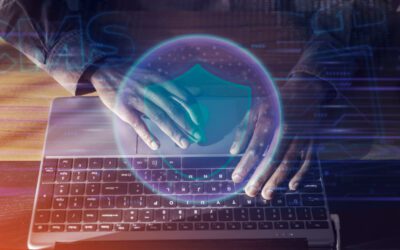If you’re a lawyer who is trying to stay on top of cybersecurity issues, then you have probably heard of the National Institute of Standards and Technology (NIST) Cybersecurity Framework (CSF). But what is the NIST CSF for lawyers specifically? And why is it important? In this blog post, we’ll break down each element of the NIST CSF so that you can be sure your firm has all its bases covered when it comes to cybersecurity.
What is the NIST CSF Framework?
The NIST CSF is a comprehensive set of guidelines and best practices for protecting an organization from cyber threats. It was developed by the US government in response to the increasing number of cyber attacks targeting critical infrastructure around the world. The framework consists of five core components that provide guidance on how organizations should protect their networks and assets from malicious actors. Let’s take a closer look at each one.

- Identify: The first step in any successful security program is identifying your assets and understanding what needs protection. This includes understanding where data is stored, who has access to it, and how it flows through your network. It also includes assessing potential risks, such as outdated software or weak passwords, that could lead to a breach.
- Protect: Once you’ve identified your assets, you need to put measures in place to protect them from attackers. This may include encrypting data at rest or in transit, using multi-factor authentication for user accounts, patching vulnerable systems regularly, and more. The goal here is to make sure that even if an attacker does gain access to your system, they won’t be able to do much with it.
- Detect: No matter how well you protect your systems against attack, there will always be some risk of a breach occurring. That’s why it’s important to have systems in place that can detect when something goes wrong quickly so that you can take action before any further damage can be done. This may include monitoring user activity on your network for suspicious behavior or using advanced analytics tools to detect anomalies in data flows or patterns of usage that could indicate a breach has taken place.
- Respond: Once an attack has been detected, it’s important to respond quickly and effectively in order limit any damage caused by the incident and restore normal operations as soon as possible. This may involve shutting down parts of the network until they can be secured again or working with law enforcement agencies if necessary. It also involves making sure all employees are aware of what happened and what steps need to be taken going forward in order minimize future incidents from taking place.
- Recover: Even after an incident has been dealt with and normal operations have been restored, there are still lessons that need to be learned from the experience so similar incidents don’t happen again in the future. This involves conducting a thorough investigation into what happened, tracking down those responsible for any harm caused by the incident (if applicable), updating policies and procedures accordingly based on what was learned during the investigation process, and ensuring all employees are aware of these changes going forward.
The NIST CSF provides organizations with comprehensive guidance on how they should approach cybersecurity issues. By following each component carefully, law firms can ensure they’re doing everything required to keep their networks safe from malicious actors. With proper implementation, the NIST CSF for lawyers provides firms with peace mind knowing their information remains secure while also allowing them focus their time elsewhere. Overall, it is abundantly clear that attorneys should prioritize learning about the NIST Cybersecurity Framework in order to understand their clients’ security procedures and protect confidential information. Appropriate training and knowledge about the NIST CSF positions them as responsible professionals and helps to better advise those relying on their expertise. These legal guardians also benefit from a peace of mind knowing they are actively taking part in maintaining a secure environment today and into the future. Along with other compliance frameworks, utilizing the NIST CSF gives attorneys more comprehensive oversight of comprehensive risk management strategies necessary to be successful.

Wrapping Up – NIST CSF for Lawyers and Law Professionals
Working with a cybersecurity managed service provider ensures attorneys are adept at evolving cybersecurity measures, equipped to best protect their firm against cyber threats with good policies and procedures. Having an understanding of the five core components of the NIST Cybersecurity Framework can help bolster any organization’s security protocol for long-term resiliency. Attorneys should consider leveraging this framework by endeavoring to incorporate components into their organization’s policy as soon as possible for optimal protection. You can also work with a cybersecurity managed service provider today to learn best practices.




